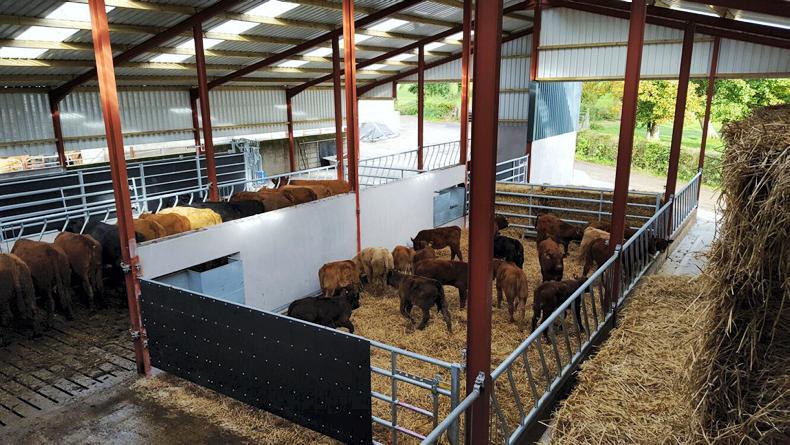When farming, we need to adapt on a regular basis to the weather conditions.
With some parts of the country experiencing heavy rainfall in the last few days, some farms have brought housing forward.
So here are seven top tips for housing animals.
1 Enough space for first grazers
Animals housed for the first time have to change diet and environment, so giving adequate space per animal is really important.

Usually, younger animals should be a priority for space and have clean, comfortable lying surfaces.
With straw cheap this year, there are no excuses for not having enough clean warm bedding under animals.
2 Controlling parasites - take a step back
When housing early, we need to consider what doses to use.
A good wormer is probably necessary and depends on what has been given.
If animals are wet at housing, don’t use pour-ons, as absorption might be affected.
It is also a great time to control fluke and rumen fluke on some farms.
Any cattle that have been killed should have livers checked for fluke.
All cattle housed that are coughing need to consider lungworm as a risk.
Farmers could take six to eight faecal samples and pool them, checking for worm and fluke eggs.
This, along with clinical signs, can guide our treatment decisions.
Just because cattle are in, doesn’t mean you have to dose straight away, sometimes we have to step back to make better decisions.
3 Vaccines an important part of herd health for the winter
If vaccination hasn’t been given, some farms should consider intranasal IBR and RSV vaccines 24 hours after housing to healthy animals.
These vaccines will act faster and provide three months of cover.
Otherwise, normal vaccinations should be carried out 24 to 48 hours after animals have settled into housing.
4 Fresh air and more fresh air
This is still the biggest bottleneck on most Irish farms, with not enough fresh air in most sheds.
Any animal with a rumen will produce heat and this rises and will need an outlet to escape from.
Ensure that sides of shed will allow air to be sucked in through an inlet.
My own opinion is to try to keep lying space dry and the shed with older animals as open as possible.
Where high wind speeds are an issue, wind breakers work well.
5 Watch for temperatures
Watch cattle carefully for the first seven to 10 days, while they adjust to their new surroundings.
Have a thermometer close to hand and any animal with a temperature of 39.5°C or more needs to be treated or investigated by your vet.
Watch for heavy breathing, snotty noses or coughing.
All cattle brought in for housing should have their backs clipped to prevent sweating.
6 Clean available water
Make sure all water troughs and bowls are working and cleaned out.
Water is often limiting in the indoor animal and is the most critical component of their diet.
7 Supplementing feed and silage analysis
Changing diet will always take the rumen about seven to 12 days to adjust to.
Young weanlings may require extra meal feeding to make sure there are no nutritional checks or stresses on them.
Get silage analysis done now to see what energy and protein content is like.
Don’t forget mineral analysis also, as this can give a guide to deficiencies and any other feeding requirements.






 This is a subscriber-only article
This is a subscriber-only article











SHARING OPTIONS: